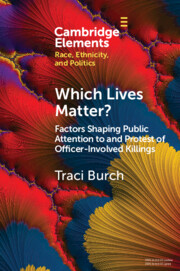Element contents
Which Lives Matter?
Published online by Cambridge University Press: 11 September 2023
Summary
- Type
- Element
- Information
- Online ISBN: 9781108982870Publisher: Cambridge University PressPrint publication: 05 October 2023
References
- 1
- Cited by



